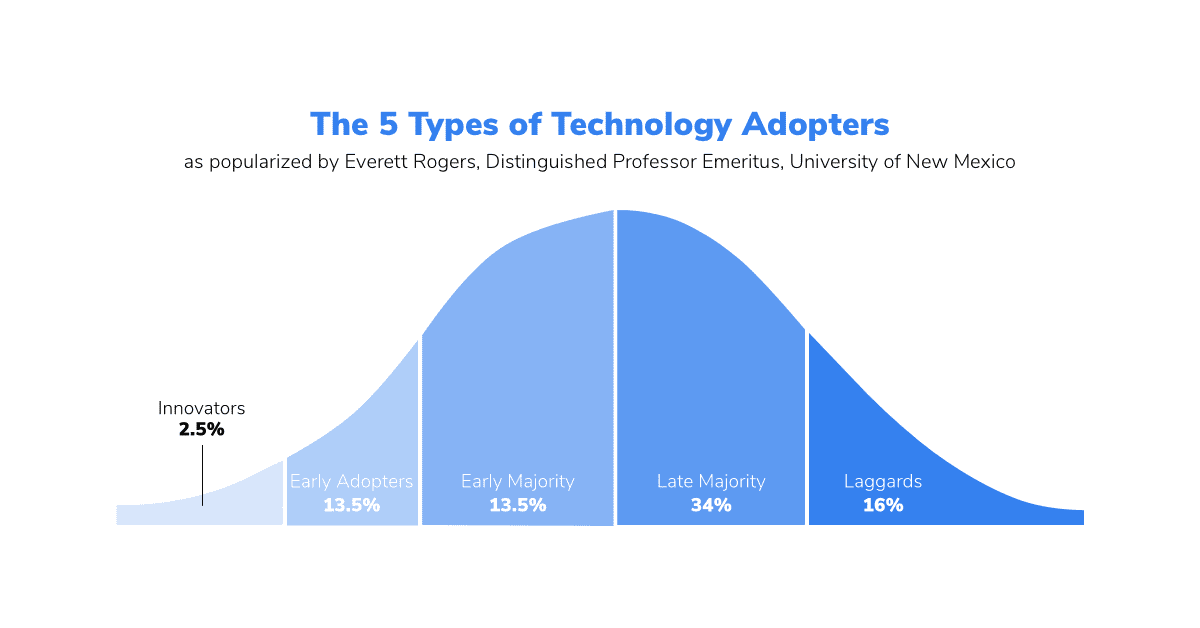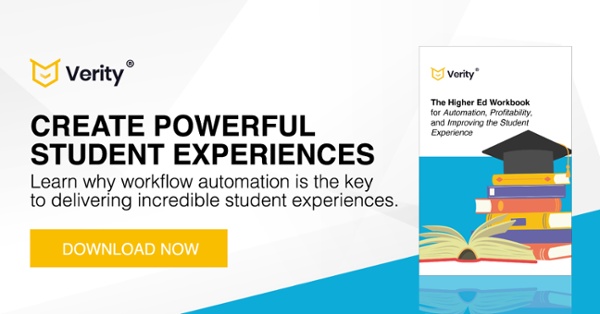3 Easy User Adoption Tips for Higher Ed Technology
There was a time when Higher Ed technology was largely behind other industries when it came to innovation and capabilities. As a result, schools were forced to use software that was often clunky, prone to errors, and created a lot of manual work.
However, that is no longer the case.
Today, there are a lot of incredible tools out there that are streamlining processes, impacting profitability, and making lives easier for Higher Ed professionals everywhere.
If you’re considering bringing in new software, you may be concerned about user adoption and getting buy-in from your team. That’s why it’s critical to have a good user adoption strategy.
Let’s take a closer look at the technology adoption curve and how you can get the whole team bought in the next time you bring in new technology.
How to Overcome the Technology Adoption Curve
Technology adoption doesn’t happen overnight—it takes time, work, and buy-in from the team before it can be fully adopted and implemented.
As you can see in the image, you’ll get a few innovators and early adopters, but it’s much more difficult to get the bulk of the team bought into any new technology that you implement. You’ll almost always have stragglers that are resistant to change and don’t want to learn how to use the new technology.
If you’re looking for tips on how to drive technology adoption, here are some ideas to speed up the process and unlock widespread user adoption:
1. Leverage the Power of Technology Early Adopters
People at work pay attention to what their peers are doing, so use this to your advantage. Harness the energy and excitement of your early adopters and channel it toward the rest of the team so they can capture some of it themselves.
Make sure that you’re not just sharing the fact that your early adopters are using the technology, but what the benefits are for those folks (hint: think about time saved, work streamlined, lives made easier, etc.) You could even consider rewarding early adopters, which would incentivize the rest of the team to get on board.
However you approach it, creating champions within your organization is one of the best ways to get widespread user adoption.
2. Understand the Different Paces of a Multi-Generational Workforce
One of the biggest challenges when bringing in new technology is that all people (especially people of different ages) learn at different paces. This is particularly true in Higher Ed, which can often be slower to adopt new tech, resistant to change, and stuck in the mode of “this is how we’ve always done it.”
When you look at your team, how do you see it playing out? Who will be resistant to change and slower to learn? Be prepared to spend extra time with them, answer questions, and help them learn the new technology.
It’s also important to think about how different people like to learn and recognize that you may need to offer multiple approaches for your team. Some people prefer to watch and are visual learners, some like to listen to directions, and others learn best by doing it themselves.
Good vendors will also provide materials and training services that can help you with all of this!
3. Lead By Example
Like with most things in the workplace, adopting new technology starts at the top. If your team doesn’t see you and other members of the leadership team walking the talk, they’re not very likely to take it seriously themselves. If you build a culture that prioritizes your new technology and all that it can do for your team, the rest will fall into place.
And keep it positive! Sure, learning the new technology is probably not optional for your team, but keep the dialogue more about the fact that they get to use the new technology, what it can do for them, how it will help make their lives easier.
Find little ways to promote it every day, especially in the beginning. Here are some ideas:
- Praising someone who’s using it well
- Sharing a quick tip
- Talking about your favorite feature
- Reminiscing (“Remember when it used to take us 3+ hours to do X?”)
When you track your KPIs and your team starts to see the hours saved, classes managed, students helped, etc., they’ll be much more likely to get on board. For some, seeing is believing and the right software will provide you with the data to back it up.
These tips fall into place even better when you’re using technology built for Higher Ed professionals by Higher Ed professionals—made easier with workflow automation.
That’s something we hang our hats on at Verity, and providing support for widespread user adoption is one of the things our clients love most about us. Schedule a demo to see what Verity can do for you!



